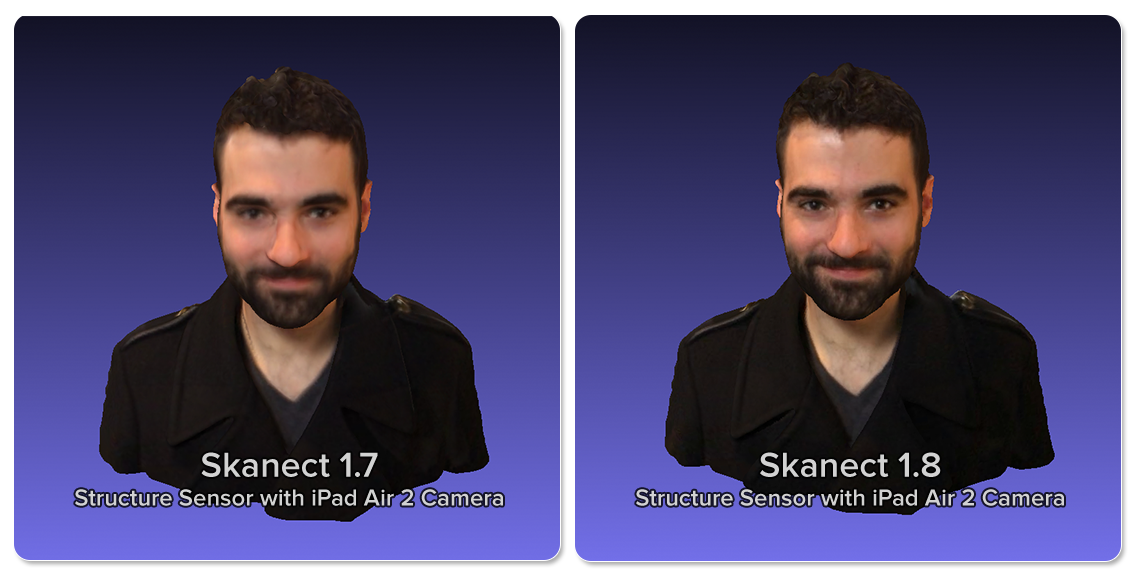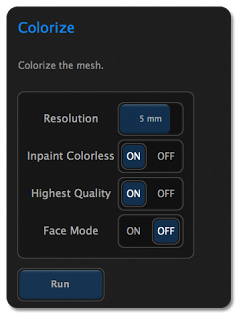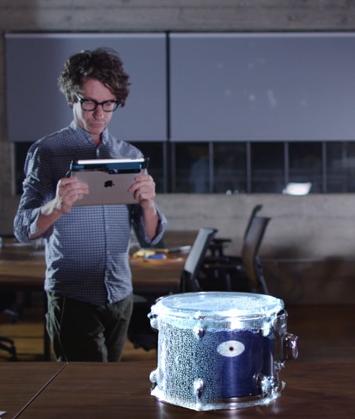In addition to the Structure Sensor, startup company Occipital makes Skanect, a 3D scanning software package, and now they’ve just launched the latest version of the tool, Skanect 1.8.
 Skanect says capturing a full color 3D model of an object, a person or a room “has never been so easy and affordable.” The Skanect software transforms a Microsoft Kinect or Asus Xtion camera into an ultra-low cost, 3D scanner capable of creating 3D meshes in just a few minutes.
Skanect says capturing a full color 3D model of an object, a person or a room “has never been so easy and affordable.” The Skanect software transforms a Microsoft Kinect or Asus Xtion camera into an ultra-low cost, 3D scanner capable of creating 3D meshes in just a few minutes.
“In addition to the typical bug fixes and cleanup that come with a new release, the most important upgrade is a major enhancement in the color textures of the models that are captured,” says Adam Rodnitzky of Occipital. “This is particularly true when 3D models are captured with a Structure Sensor — as it gets to use the iPad’s superior color camera — but the enhancements are equally impressive with other depth sensors like the Kinect, Xtion and Carmine.”
 And should you have been one of the first to begin using Skanect, fear not, your old models are still in play.
And should you have been one of the first to begin using Skanect, fear not, your old models are still in play.
“We’ve designed it so that even models captured in the past using older versions of Skanect can be reloaded and reprocessed to benefit from the improvements in texture quality that version 1.8 brings,” Rodnitzky adds.
Skanect acquires dense, 3D information from a scene at up to 30 frames per second as the Kinect or Xtion is moved about to capture a full set of viewpoints to build a 3D mesh in real time, and it offers a set of predefined scenarios which are suitable for most uses.
The Structure Sensor was the first iPad 3D scanner and at one point, it ranked as the sixth-highest funded Kickstarter campaign. At $399 ($499 if you purchased Skanect software in the package) the Structure Sensor uses a pair of infrared LEDs and camera that clips on to the iPad, iPad Air, and iPad Mini with Retina. The device was popular on Kickstarter, blowing past its $100,000 goal to ultimately raise more than $1.2 million.
The Structure Sensor is powered by a tiny infrared sensor made by Isreali startup PrimeSense. That company makes the sensors for Kinect and was snapped up last year by Apple. The sensor uses information in the near-infrared range and uses a complex algorithm to turns that data into a 3D model.
 While highly complex geometries aren’t the strength of the software, it does let you make a very detailed rendering of a face or a room, and the latest release is much improved in color rendering and detail.
While highly complex geometries aren’t the strength of the software, it does let you make a very detailed rendering of a face or a room, and the latest release is much improved in color rendering and detail.
The improvement in color textures from version 1.7 to version 1.8 is very impressive, and you can download a free version.
If you need the full array of feature, you can get Skanect Pro which lets users wirelessly stream 3D scans from a Structure Sensor in real-time to a Mac or PC for rapid capture, editing, and sharing of high-quality, full-color, 3D scans. Skanect Pro is available separately for $129.
Skanect Pro has been designed by the Occipital team to work seamlessly with your Structure Sensor. Occipital says “capturing a full color 3D model of an object, person, or room has never been easier.” You can get more information about Skanect Pro here.
Have you ever used Skanect from Occiptial? Let us know in the New Version of Skanect 3D Scanning Software forum thread on 3DPB.com.
Subscribe to Our Email Newsletter
Stay up-to-date on all the latest news from the 3D printing industry and receive information and offers from third party vendors.
You May Also Like
3D Printing Unpeeled: New Arkema Material for HP, Saddle and Macro MEMS
A new Arkema material for MJF is said to reduce costs per part by up to 25% and have an 85% reusability ratio. HP 3D HR PA 12 S has been...
3D Printing News Briefs, January 20, 2024: FDM, LPBF, Underwater 3D Printer, Racing, & More
We’re starting off with a process certification in today’s 3D Printing News Briefs, and then moving on to research about solute trapping, laser powder bed fusion, and then moving on...
3D Printing Webinar and Event Roundup: December 3, 2023
We’ve got plenty of events and webinars coming up for you this week! Quickparts is having a Manufacturing Roadshow, America Makes is holding a Member Town Hall, Stratafest makes two...
Formnext 2023 Day Three: Slam Dunk
I’m high—high on trade show. I’ve met numerous new faces and reconnected with old friends, creating an absolutely wonderful atmosphere. The excitement is palpable over several emerging developments. The high...































